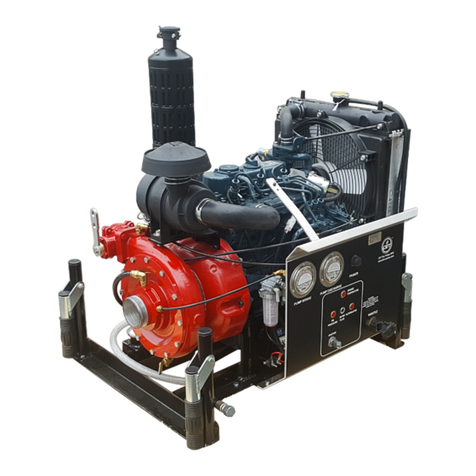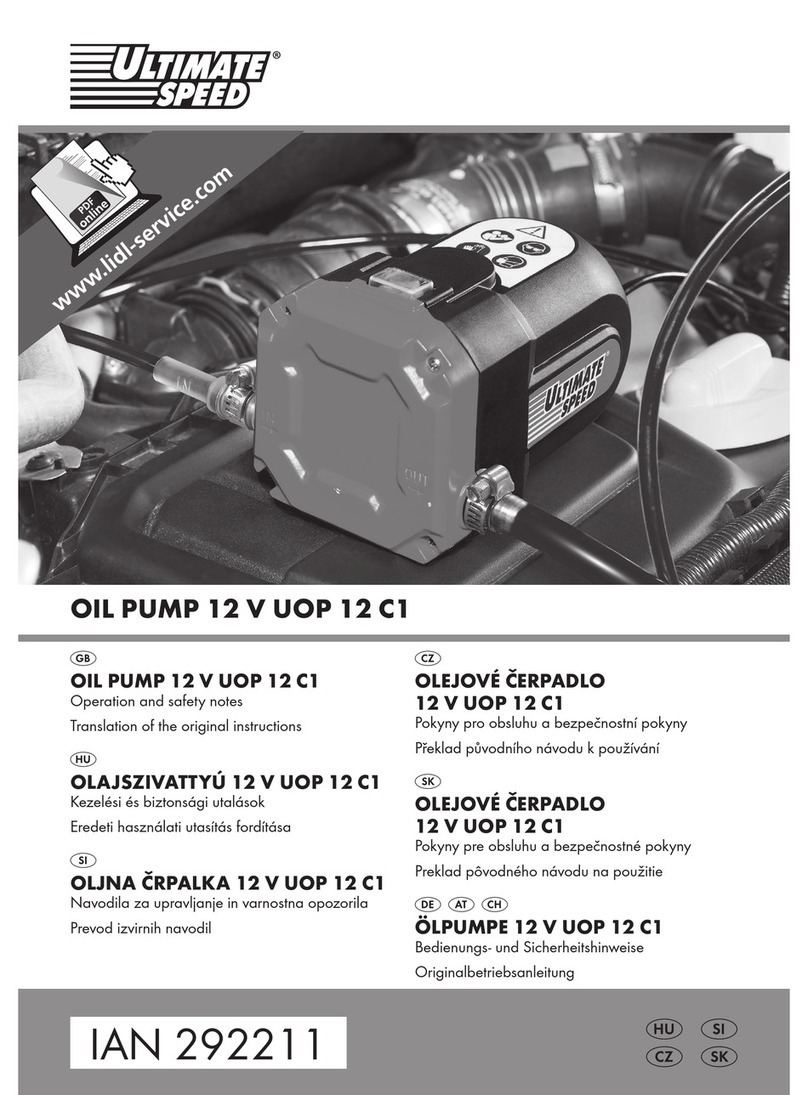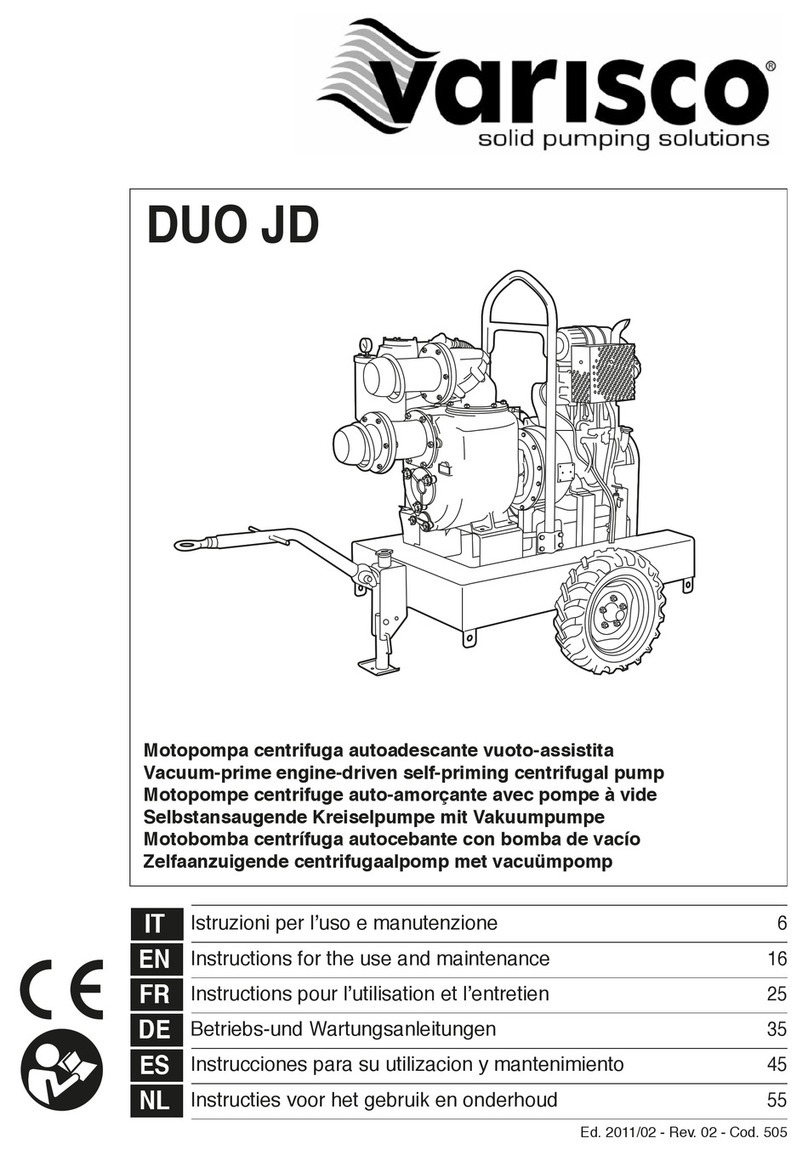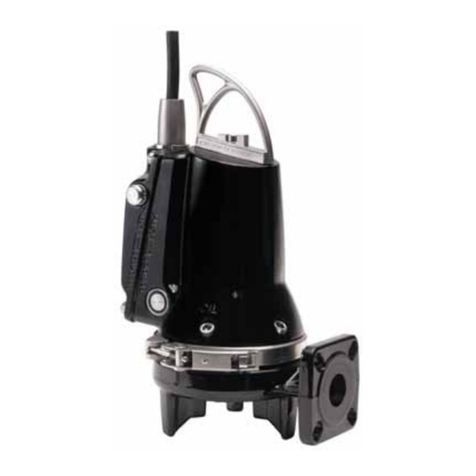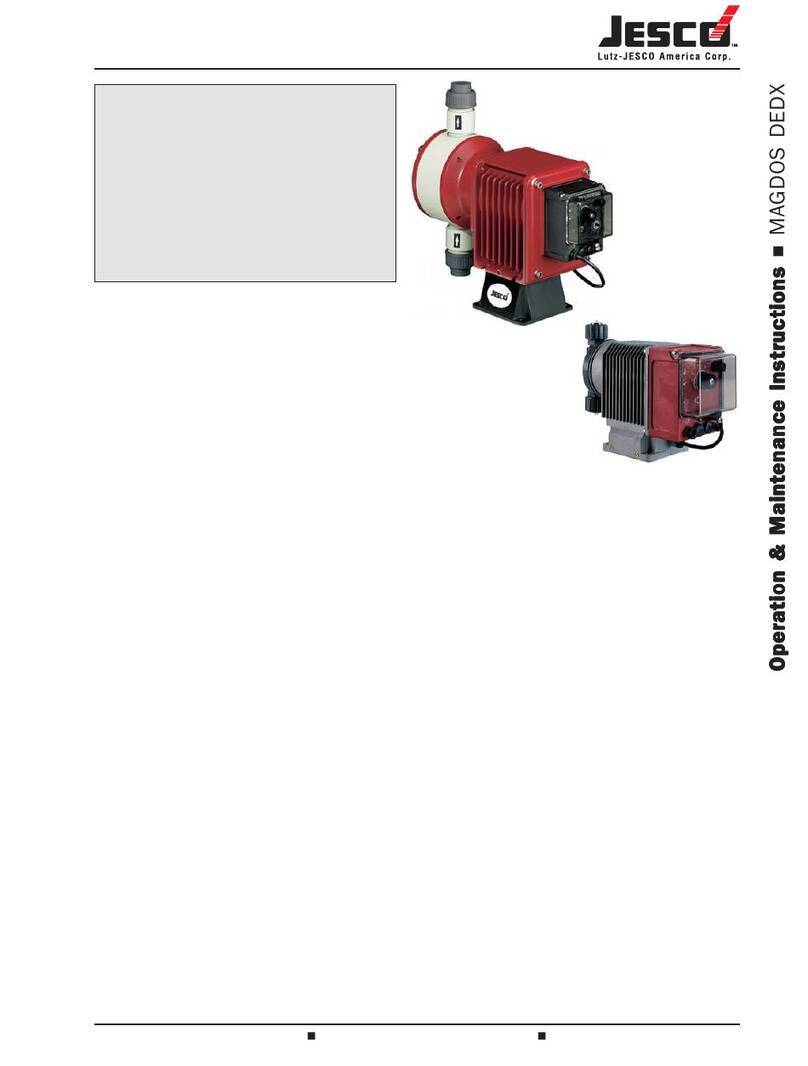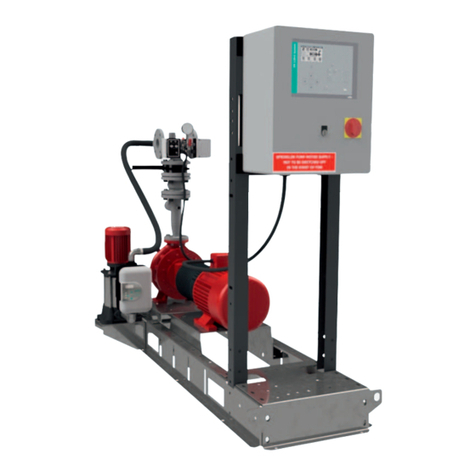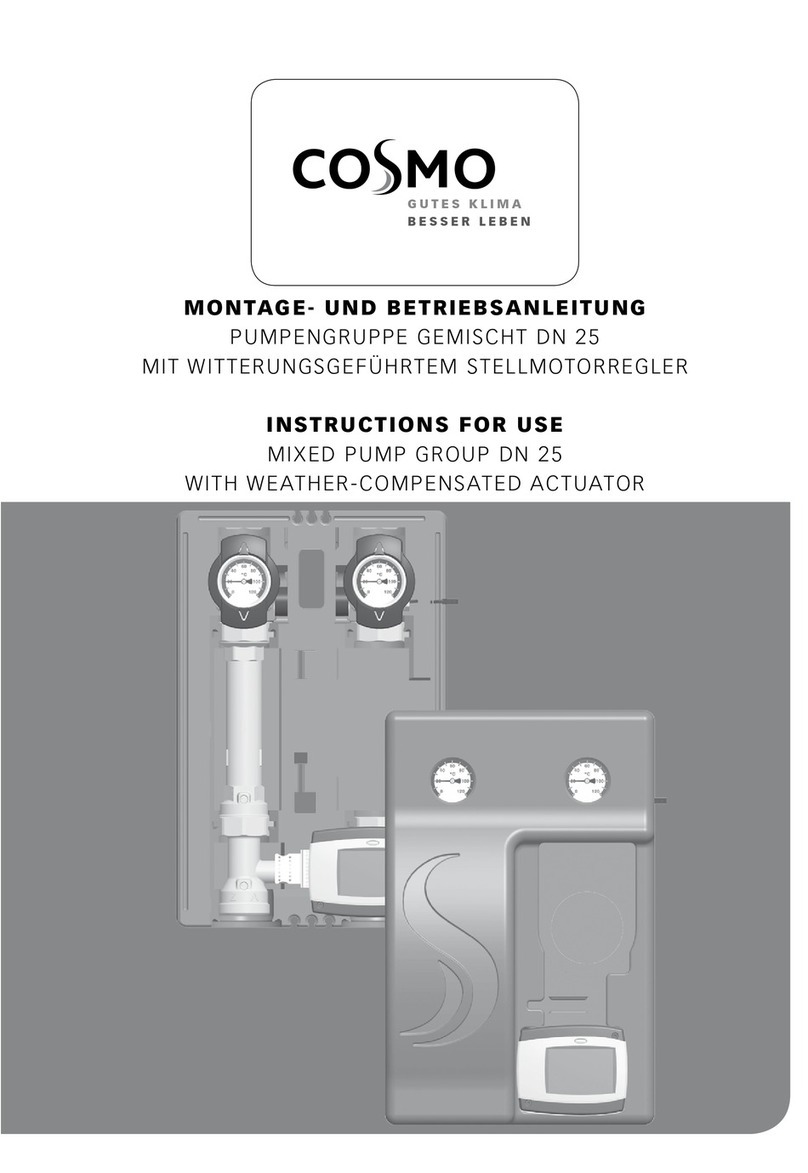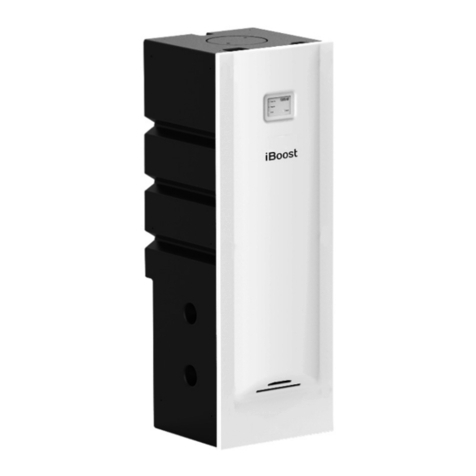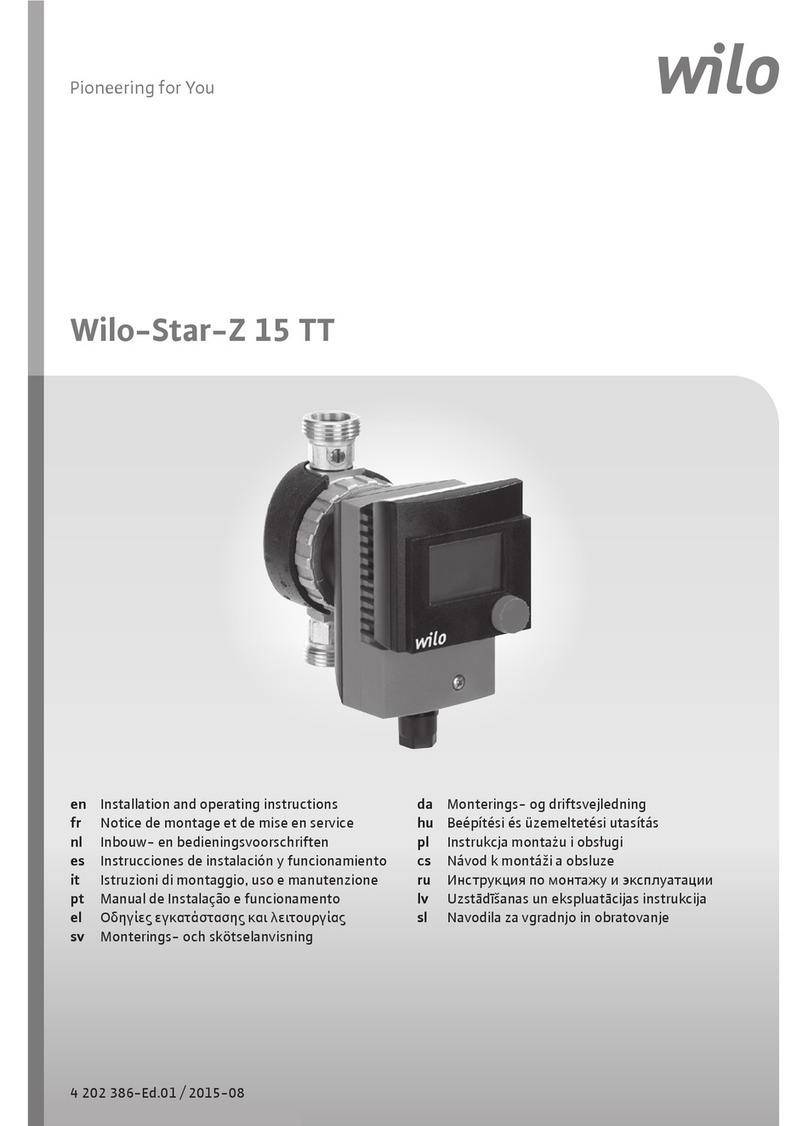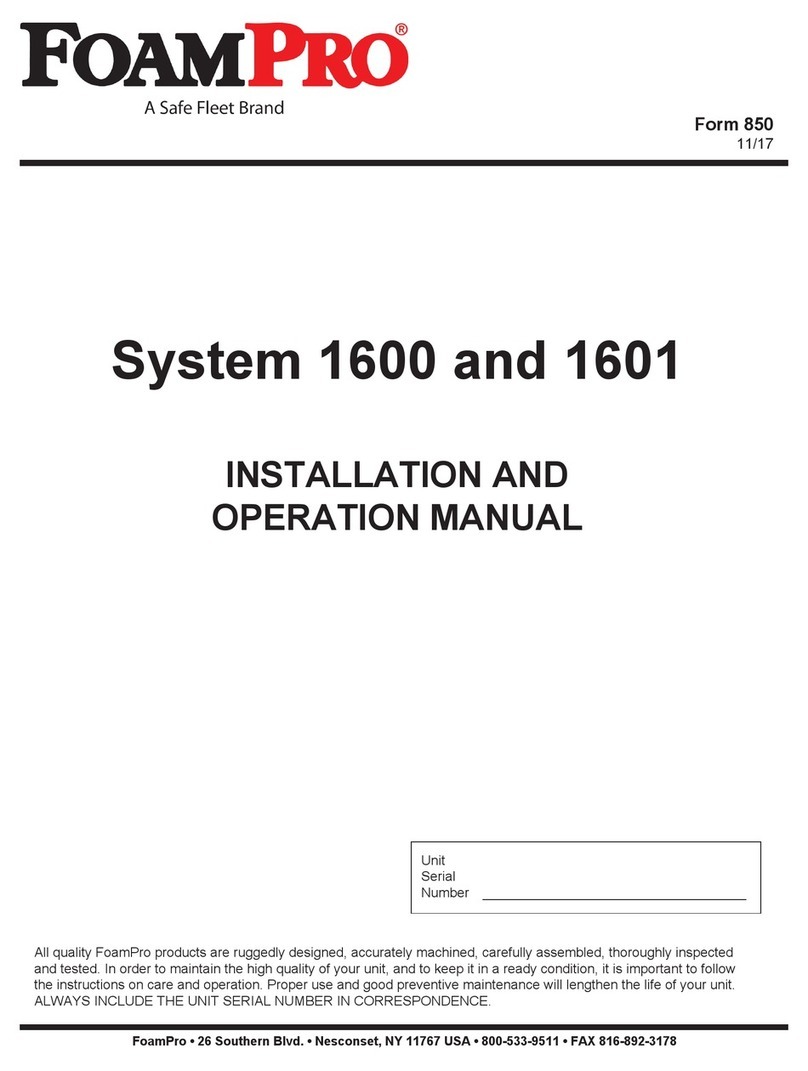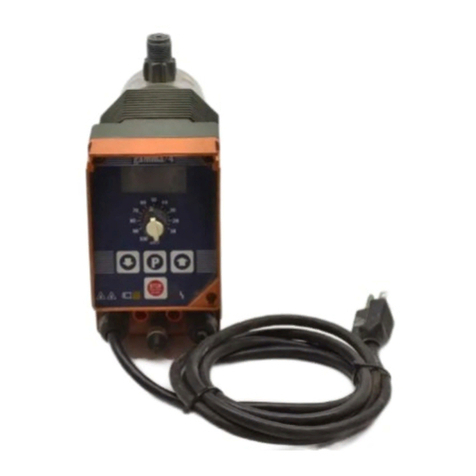
2. Spegnimento della pompa dopo l’uso
Per prolungare la vita della pompa è necessario seguire le seguenti procedure.
(a) Chiudere il rubinetto che collegata la pompa al sistema.
(b) Rimuovere i tubi in ingresso alla pompa.
(c) Riposizionare il tappo di chiusura sui raccordi in aspirazione per prevenire
qualsiasi ingresso di contaminanti nella pompa.
III. Manutenzione
1. Olio pompa a vuoto:
Le condizioni e il tipo di olio utilizzato nella pompa a vuoto sono determinanti per il
raggiungimento del massimo vuoto ottenibile. È raccomandato l’utilizzo di Oli ad alte
prestazioni specifici per pompe del vuoto, che sono specificamente creati per
ottenere la massima viscosità alle temperature di esercizio standard e per migliorare
lo start up a freddo.
2. Procedura per la sostituzione dell’olio
(a) Assicurarsi che la pompa si sia riscaldata.
(b) Rimuovere il tappo di scarico dell’olio. Scaricare l’olio contaminato in un apposito
contenitore e smaltirlo correttamente. L’olio può essere rimosso della pompa
aprendo tappo sul raccordo di aspirazione e bloccando parzialmente lo scarico con
un panno mentre la pompa è in funzione.
Non utilizzare la pompa per più di 20 secondi utilizzando questa procedura.
(c) Quando il drenaggio è completato, inclinare la pompa per rimuovere l’olio residuo.
(d) Rimettere il tappo di scarico dell’olio. Rimuovere il tappo dell’olio e riempire il
serbatoio finché il livello è visibile alla base dell’indicatore.
(e) Assicurarsi che il tappo sul raccordo di aspirazione della pompa sia chiuso prima
di accendere la pompa. Far funzionare la pompa per circa un minuto e verificare il
livello dell’olio. Se il livello è inferiore alla linea Oil Level nell’indicatore, riempire
lentamente (con la pompa in funzione) fino a quando l’olio raggiunge la linea segnata
nell’indicatore. Rimette il tappo dell’olio e assicurarsi che il tappo sul raccordo di
aspirazione e il tappo di scarico siano chiusi saldamente.
(f) i) se l’olio è severamente contaminato da sostanze con presenza di residui solidi
formate durante il funzionamento, potrebbe essere necessario lo smontaggio del
coperchio del serbatoio dell’olio e pulire l’interno.
ii) una procedura alternativa per affrontare un olio contaminato è quella di forzare lo
spurgo dell’olio attraverso il tappo di scarico.. Lasciare la pompa in funzione finché
non si è riscaldata. Mentre la pompa è in funzione rimuovere il tappo di scarico
dell’olio e limitare leggermente lo scarico dell’olio esausto. Questo creerà una
contropressione nel serbatoio che spurgherà l’olio dai contaminanti. Spegnere la
pompa quando il flusso dell’olio si ferma.
iii) Ripetere questa procedura sino a quando i contaminanti saranno rimossi
completamente.
iv) Rimettere il tappo di scarico dell’olio e riempire il serbatoio dell’olio in modo da
avere un corretto livello di olio nella pompa a vuoto.





















